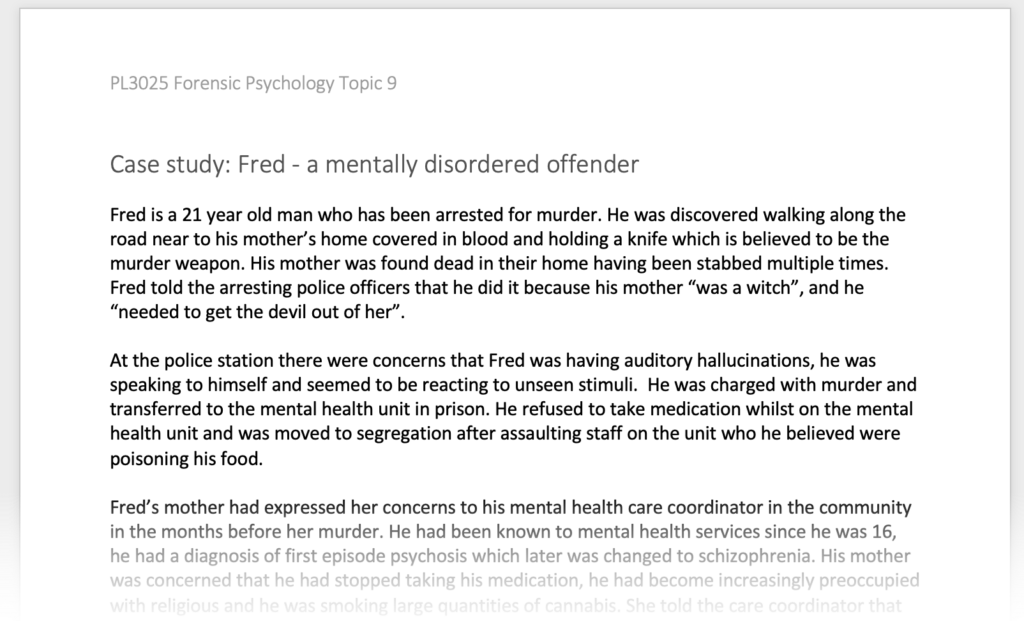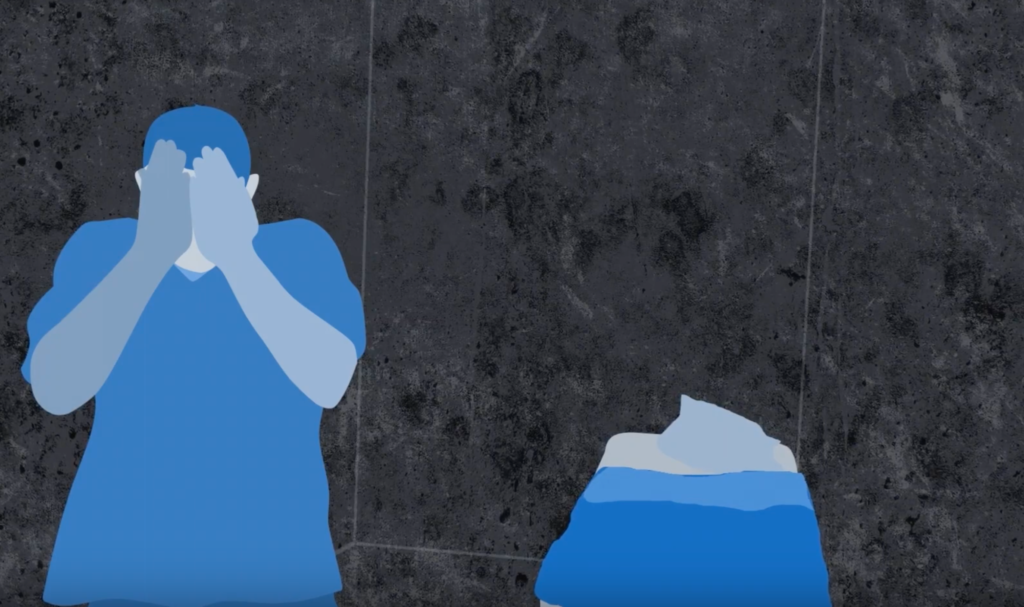The challenge
We’re working with academics from King’s College, London, on a new level 6 Forensic Psychology module for our online BSc Psychology. We’re using several realistic (if not actually real) case studies that deal with some quite hard-hitting scenarios such as domestic violence, mental illness and drug taking. In this example, students are asked to engage with the case study and then apply what they have learned about psychological interventions with mentally disordered offenders. As the learning designer on the project I wanted to,
- ensure that these issues were presented sensitively to our online learners; I was conscious that students might engage with the subject matter alone
- bring to life the case studies – they were originally intended as a dry, text-based PDF for students to read
- present the material sensitively through appropriate images and a suitable narration.

The approach
I discussed the case studies with our motion graphics designer, Taj Dhami, to get his ideas on how to handle this. Taj says,
“The Forensic Psychology module presented us with a unique motion graphics challenge. We were give a number of case studies that contained difficult material and contexts that need to be animated sensitively. The solution we found was to create a series of stylised illustrations that plotted the narrative, and allowed us to allude to the content in a general, rather than specific, way. Further, we utilised a voice emulator as a narrator. Combining these two perceptual modalities (oral and ocular) provided the necessary distance from any particular person or demographic. In addition, the voice emulator provided a unique space away from the rest of the lectures.”

The outcome
Here’s an example of one of the finished animated case studies. Please note that the video deals with topics including domestic violence, mental illness and drug taking.
The motion graphics and animation that Taj produced presents the material in a way which tells the story without sensationalising it. The characters are presented as anonymous figures which I think is really effective, and the emulated voice is surprisingly realistic – it allowed us to narrate the video quickly and reliably.
Ollie, our video producer/editor commented,
“The illustrative work is very effective here. It fits in well with the programme branding and the emulated voices do a surprisingly good job of keeping the tone scientific and not overly emotive.”
We hope our students find these case studies an interesting and supportive way to engage with the topics.
Anna Armstrong (Learning Designer), Tajinder Dhami (Motion Graphics Designer) and Oliver Hodgkins (Video Producer/Editor)

